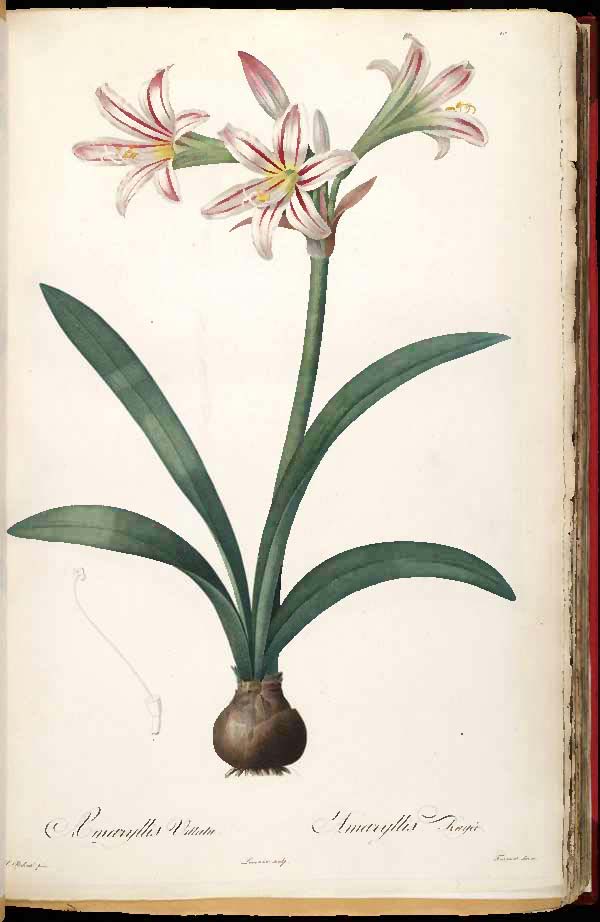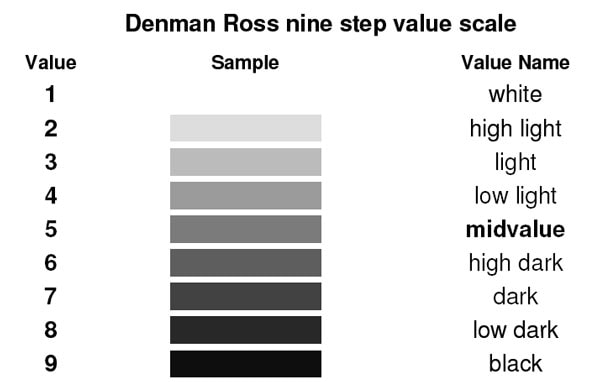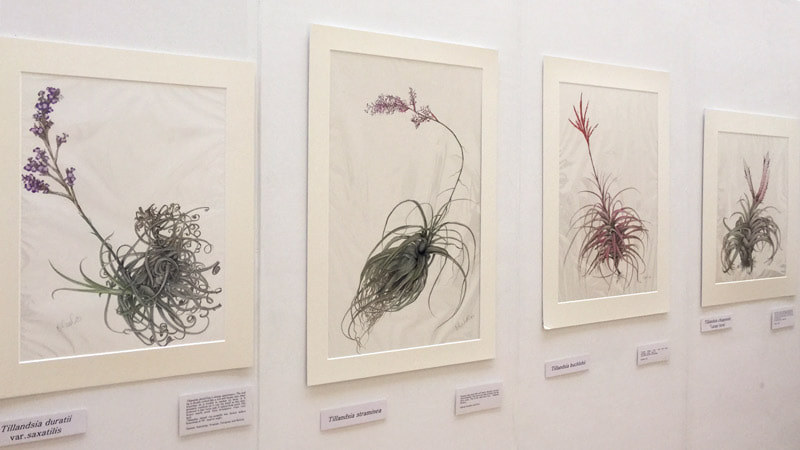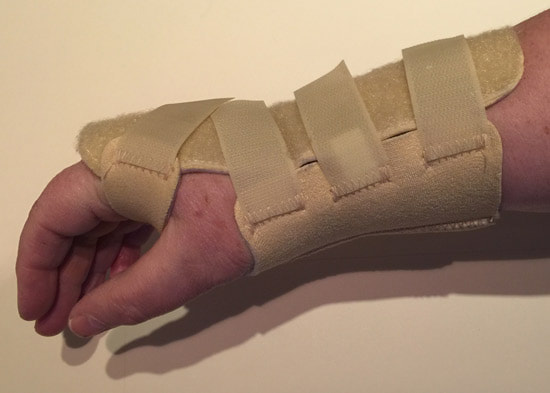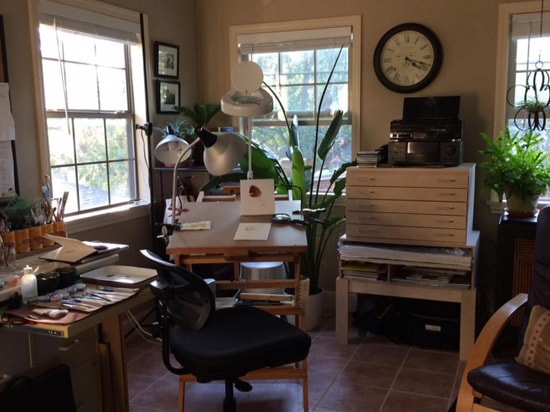- Home
- NEWS
-
HISTORY
- What is Botanical Art?
- What is Botanical Illustration?
- Botanical Art History Books >
- Herbals
- Florilegia and Flora
- Patrons of Botanical Art >
- Past Masters - Botanical Art and Illustration >
- Famous Asian Botanical Artists (600-1900)
- 20th & 21st Century Botanical Artists >
- Botanical Photographers
- Botanical and Herbal Art Online
-
ARTISTS
- Botanical Artists in the UK
- Botanical Artists in North America
- Botanical Artists in Europe
- Botanical Artists in Australia and New Zealand
- Botanical Artists in Asia
- Botanical Artists in Africa
- Botanical Artists in Latin America
- Botanical Printmakers, Photographers, Sculptors et al
- The Jill Smythies Award
- Botanical Artists on Facebook
- Botanical Art Blogs
-
Exhibitions
- Calls for Entries - OPEN exhibitions
- Online Exhibitions >
- RHS Botanical Art & Photography Shows >
- The Shirley Sherwood Gallery of Botanical Art >
- Hunt International Exhibition of Botanical Art & Illustration
-
UK
>
- North America >
- Europe >
- Australasia >
- Asia >
- Africa
- ARCHIVE: World Wide Exhibition of Botanical Art 2018
-
Education
- NEW BOOKS about Botanical Art and Illustration >
-
Best Botanical Art Instruction Books
>
- Tips and Techniques >
- Botanical Art Video Tips >
- Online Botanical Art Instruction >
- International Directory: Botanical Art Teachers
- International Directory of Botanical Art Courses >
- Artist Residencies, Scholarships and Bursaries
- Diplomas and Certificates >
- Distance Learning Courses
- Talks, Lectures & Tours
- Botanical Education on Facebook
- Materials
- Groups
-
Botany
- Why botany matters to artists
- Botany Books for artists >
- Scientific botanical illustration
- Plant Forms and Anatomy
- Plant Evolution and Taxonomy
- Plant Names and Botanical Latin
- Botanical Dictionaries
- How to Identify Plants
- Recording a Plant / Sketchbooks >
- Botanic Gardens & Herbaria >
- Blogs about Plants and Flowers
- Contact
This page - and those linked to it - provide
TIPS & TECHNIQUES
about a LOT of different aspects of developing botanical art.
TIPS & TECHNIQUES
about a LOT of different aspects of developing botanical art.
Botanical Artists are renowned for sharing their experience and expertise with one another.
Many now do so using their websites and blogs or by writing articles for other websites.
Many now do so using their websites and blogs or by writing articles for other websites.
Contents - Tips and Techniques
On this Page |
More TIPS on sub-pages
|
|
GENERAL
|
|
PLUS: Other pages in the EDUCATION section if you want to STUDY MORE:
- Video Tips for Botanical Artists
- The Best Botanical Art Instruction Books
- International Directory of Botanical Art Teachers
- International Directory of Classes, Courses and Workshops
- Online Botanical Art Courses - PLUS: A CHECKLIST of Online Learning FAQs - Botanical Art and Illustration
- Botanical Art Diploma and Certificate courses around the world
- NEW Distance Learning Courses for Botanical Art
TOPICS AND LINKS
left - on this page; right - on seperate pages
BOTANICAL ART
- General Tips
-
|
SUBJECT MATTER: PLANTS AND FLOWERS
|
|
DRAWING
|
|
|
PAINTING
|
|
|
PENCIL
|
|
PEN AND INK
Moved to dedicated page |
|
|
COMPOSITION
Moved to dedicated page |
|
|
COLOUR
Moved to dedicated page |
|
|
SUPPORTS
|
|
|
|
|
HEALTH AND SAFETY
PHOTOGRAPHY & PRESENTATION
|
|
Many of the artists sharing tips in articles and blog posts below also provide tuition in workshops, classes and on courses. (Find out more about Tuition and workshops)
Note: The image at the top of the page is from Ehret's illustration of Ficus
Note: The image at the top of the page is from Ehret's illustration of Ficus
CONVENTIONS of Botanical Art and Illustration
There are a number of conventions associated with botanical art. It's helpful to understand what these are and the reasons for their existence
Botanical Illustration
|
|
Botanical Art
Botanical art has to describe both scientifically and aesthetically what is observed.
Anne Marie Evans
‘The flower painter fails if a work lacks beauty, the botanical artist fails if it lacks accuracy.'
Wilfred Blunt and William Stearn
|
How to become a botanical artist or illustrator
|
There is very little full time employment for botanical artists or illustrators. Most employment opportunities are not advertised.
Most botanical illustrators are independent professionals who work on commission for a fee - often per piece completed.
Botanical artists also
|
You must love both nature and detail and have a number of drawing skills to be a professional botanical illustrator. Skills required include: |
REFERENCES:
- How to become a botanical illustrator | BA&A News - What does the job involve? How do you get a job in botanical illustration at one of the major botanical gardens that employ botanical illustrators?
- How to be a Botanical Artist | Kew Gardens - top tips from Kew’s botanical artists.
- Ask a botanical art expert: Hazel Wilks - on 12th May - Kew regularly holds events when you can speak to their botanical illustrators (watch out for events highlighted by news blog)
- WOMEN IN SCIENCE The Botanical Artist Who Translates Plant Science Into Beautiful Art - The Smithsonian’s first and only botanical illustrator brings her subjects to life in all their scientific glory
- Botanical illustration is becoming endangered, but the job is essential | Washington Post (the cached version for those without a subscription)
TIPS for Developing and Exhibiting Botanical Art
Exhibits of groups of drawings or paintings are assessed first and foremost as botanical illustration.
RHS Guidelines for exhibiting botanical artwork
TIPS FOR DEVELOPING YOUR BOTANICAL ART
These are based on the tips I've picked up from my interviews with artists winning RHS Gold Medals and other prestigious prizes (see links to my articles in the next section) and reading interviews with leading artists. I've tried to summarise here the lessons they've learned and are happy to share.
These are based on the tips I've picked up from my interviews with artists winning RHS Gold Medals and other prestigious prizes (see links to my articles in the next section) and reading interviews with leading artists. I've tried to summarise here the lessons they've learned and are happy to share.
|
Your subject - plants and flowers
Botany
RHS Exhibit - Project management
|
Knowledge of this specialist area of art
Planning your image
Skills in drawing and painting
Developing your own style of botanical art
|
More tips from other sources which write about botanical art and illustration
- ArtPlantae Today - Today's Botanical Artists Answer Your Questions Thirteen questions were submitted by readers and these questions were distributed among members of the panel. A heartfelt Thank You to members of the panel for sharing their thoughts, knowledge, and experience with us. And thank you to the hungry min
- 20 Tips for Painting Better Botanicals - How To - Artists & Illustrators - Original art for sale Artists & Illustrators is the UK's number 1 magazine for original art. Buy original artwork direct from the artists.
"Observation and the three Ps’ Patience, Practice and Perseverance, should be your guiding principles." |
When making a watercolour painting of a living specimen, I first study the plant from all angles—as a sculptor might study a head when making a portrait—to grasp its character … The sketch completed, I work up the "portrait" in detail, beginning with the fugitive parts such as quickly opening buds. Plants that change or wither rapidly present a very difficult problem to which there is only one answer—speed; and speed depends upon the immediate perception of the essential characteristics of the plant, a thorough knowledge of colours and colour-mixing, and a perfect co-ordination of hand and eye. Drawing from dried specimens has both advantages and disadvantages. The artist gains of course, in not having to work at high pressure for a short period; but on the other hand there is difficulty in creating the illusion of three dimensions. This can only be overcome by a thorough knowledge of botany and perspective. |
TIPS AND TECHNIQUES
about Plants and Flowers
Working with Plants and Flowers
|
If collecting specimens outside
(ONLY if the plant is not at risk and local laws allow)
The Life of a Specimen
|
Make a record of essentials BEFORE you start painting
How to preserve plant material
|
REFERENCE / READ:
- Dealing with plant specimens – Deborah Lambkin | ABBA - useful tips for preserving plants in good condition
- Getting Started in Botanical Art Techniques | ASBA (Pages 13-19 - which deals with working with cut plants and collection specimens in the field
|
For holding specimens #1
Floral Water Tubes/Vials - for single stems
BUY from Amazon.com |
For holding specimens #2
Magnetic base with 360 degree rotating gooseneck with alligator clamp head
BUY from Amazon QuadHands - Magnetic Arm 200 12" Third Hand Helping Hand Tool with Size - Fully Flexible with 360 Degree Rotating Alligator Clamp Head and Strong Magnetic Base |
Wild Flowers
|
Research information about habitat
When developing a project related to wild flowers it's essential to do some research and have a plan.
|
Seasonal challenges can be overcome:
|
Cultivated Plants and Flowers
to be developed
TIPS AND TECHNIQUES
about Botanical Art - drawing, painting, equipment, media etc.
Video Tips
|
General Tips
|
|
GENERAL TIPS: REFERENCE
|
DRAWING TIPS
Botanical observation and drawing does not merely consist of copying what is seen, but explaining what is there. The artist has to exercise his or her judgment on what is to be described, extracting those diagnostic features which characterize the species of the plant pictured. This is the reason drawing still surpasses photography in the field.
Anne Marie Evans
Draw from life and via observation
|
DRAWING - REFERENCE:
|
If possible, avoid using multipliers eg 'x3' or 'x0.5' to indicate the size of features, as this becomes meaningless if the drawing is used in a publication and printed at a different size; the use of a scale bar is accurate regardless of changes to the size of the image.
Margaret Flockton Award - A guide to scientific botanical illustration
Draw from Herbarium Specimens
|
Alice Tangerini is the botanical illustrator at the National Museum of Natural History. This is a summary of her approach to drawing from specimens.
|
Rosemary Wise is the botanical illustrator at the Department of Plant Sciences, University of Oxford
She published an article about Drawing Plants in Plant Talk (April 1999). Her tips for drawing herbarium specimens can be summarised as:
REFERENCE:
|
The Guild Handbook of Scientific Illustration, Second Edition
edited by Elaine R. S. Hodges
edited by Elaine R. S. Hodges
|
This book is expensive - however the price needs to be considered within the context of the fact it is a professional manual for people who spend their lives on scientific illustration.
Consider reviewing a copy before making a purchase. Hardcover: 656 pages Publisher: Wiley; Edition: Second Publication date: May 29, 2003 Average Customer Rating out of 5 stars:
BUY THIS BOOK The Guild Handbook of Scientific Illustration
The Guild Handbook of Scientific Illustration
|
PAINTING TIPS
Botanical Painting with Watercolour
|
Botanical painting using watercolour involves developing knowledge and a range of skills. Indeed botanical painting is not something for the beginner. You need to develop these skills before you can be an effective botanical painter.
|
REFERENCE:
|
Basic Watercolour Skills required for botanical art
You "NEED TO KNOW":
You "NEED TO KNOW":
- the properties of different watercolour media e.g. opaque and transparent paint; other paints used eg gouache and egg tempera
- best brushes for different techniques - one size does not fit all - the type of brush used very often varies according to the technique
- How to identify the colours you need to use - for a specific plant
- How to mix paints to achieve the right colours (for more about colour see the section about Colour below)
- How to apply paint: wet on dry paper; wet on wet paper, dry brush on a dry support - and variations in-between - and how to tell when the paper is wet, damp and dry
- How to create special effects: e.g. how to control a wash; how to paint fine lines; how to create hard and soft edges
- How to glaze - layering transparent colours in such a way as to create an optical effect. Some botanical paintings contain many layers of glazing
- How to lift watercolour pigment - requires knowledge of pigments and the support used (e.g. paper or vellum) as well as methods for lifting
- How to scrape out paint AND resurface you paper - using scalpel blades and burnishing tools
- PLUS knowledge of how your watercolour paper works is essential - not all papers are the same. Some suit some watercolour techniques better than others and you need to get to know a paper to know how to exploit it
|
Watercolour Paints
Watercolour paints vary a lot! They vary in terms of the quantity and quality of the pigment or dyes used - which in turn affects the intensity of the hue and how easy they are to use. It's worthwhile trying different brands of paint. Different tutors recommend different paints - but the one important thing every watercolour painter needs to find is the paint which works best for them and is consistent and reliable over time Only use watercolour paints with a high degree of lightfastness if you want to avoid your paintings fading. ASTM Lightfastness Ratings I and II are considered permanent. |
REFERENCE:
|
|
Brush Techniques
There is no shortcut to developing good brush techniques. Mastery of your brush comes from good instruction in how to use a brush and practice Brushes also wear out fast if used constantly and how they perform depends on how fresh or old they are. Brushes favoured by botanical artists include |
REFERENCE:
|
“When painting flowers you need a good brush. I predominantly use a fine-tipped, pointed no.6 brush. When you are picking up the paint with the brush, twist the brush between your thumb and forefinger to obtain a beautiful point. Always pull the brush towards you so that the hairs are not broken. A good brush is worth the investment and you should take good care of it by keeping it in a brush-roll when travelling. |
The most critical tool for artists! I would say a brush is an extension of the artist's hand. It is completely personal and extremely sensitive. Be ruthless! Discard any brushes without good points for painting. Old brushes are useful for alternative techniques. |
|
How to Paint a Tea Wash
In general, when using watercolour you work from light to dark. So you need to start by laying down a light colour. A wash is a thin mix of paint and water - applied to paper. The Tea Wash is the lightest toned wash you can paint. It's called a tea wash because it has the consistency of weak tea - without milk. It's the most fluid - if you tilt your paper it will run freely. BEFORE you start, you need to make enough fluid of the same consistency to complete the area you need to fill. The aim is to produce a single consistent even light tone. The best way to develop skills in developing an even wash is to practice first.
If the area which needs a tea wash is large you can try wetting the paper first and then apply the wash. Practice before using on a 'proper' painting. Be aware that paints which are rated 'permanent' may not be so when used as a thin wash. |
REFERENCE:
|
|
How to lift paint
You can remove colour by lifting, scrubbing and blotting. You can only effectively lift paint with any degree of control if it does not stain - hence the need to know the characteristics of the paints you use. Use a clean moist brush to remove paint. Wipe the paint removed on kitchen towel/tissue or cloth. Clean the brush in water and apply the brush as many times as required to reduce the colour load on the paper. Do not scrub if you want a soft edge. If the rest of the paint is dry you can also use absorbent paper to blot the area where you re trying to lift paint Paper towels are effective at blotting paint as they are very absorbent - however they are not very precise. A damp brush is more effective when you need control. |
REFERENCE:
|
|
Tips for using masking fluid
Include:
|
REFERENCE:
|
How to paint Flowers and Stems
When a flowering stem is to be drawn, and room has to be left for the addition later of leaves and fruit, it may be necessary to consult herbarium specimens to judge the space required. |
REFERENCE:
- Everything's Coming up Roses! The First Studies | Dianne Sutherland - a long post starting from buying plants to creating study pages of roses
- Painting roses and colour mixing | Dianne Sutherland - an overview and tips from a workshop for the Sheffield Florilegium Society
- Painting Whites on White | By Elaine Searle Originally appeared in The Botanical Artist – Volume 16, Issue 3 - includes White on White Guidelines based on the acronym WHITES
- How to paint watercolour botanicals (part one) by Sandrine Maugy - Artist and author Sandrine Maugy shows how to develop detail and accurate colour in this botanical painting in this article for Artists & Illustrators
- How to paint watercolour botanicals – part two - Artist and author Sandrine Maugy shows how to develop detail and accurate colour in this botanical painting
- The Pleasure of Sharing | Jarnie Godwin - 8 excellent and practical tips for botanical artists, particularly those working watercolour. Credits given to all the artists the tips originated from.
How to paint roots and storage organs
Not all roots are the same or look the same and it's essential that you know what you are looking at before you can begin to draw and paint roots. I've provided some brief notes below and references to other sources of information.
|
Dicotyledons (angiosperms with two seed leaves) have a tap root system.
Grasses and other monocotyledons (angiosperms with a single seed leaf) have a fibrous root system.
|
Modified stems as storage organs (i.e. NOT roots)
|
Practice in painting roots varies
|
Many botanical artists ignore roots.
However if the root is a key feature of the plant then it is normal to draw and/or paint the root. |
Common practice when painting
|
|
INSTRUCTION BOOKS: Below I am going to highlight instruction books which have a decent section about drawing and painting roots. (work in progress) Drawing and Painting Plants by Christina Brodie several pages dedicated to explaining roots and some excellent illustrations explaining them |
REFERENCE:
|
How to paint patterns in nature
THIS SECTION IS A WORK IN PROGRESS.
You will see references being gradually accumulated prior to this section being written.
You will see references being gradually accumulated prior to this section being written.
How to paint thorns, spines and prickles
|
The predominant function of thorns, spines and prickles is to deter herbivores from eating the plant. However the three terms mean different things and cannot be used interchangeably.
You need to do two things
|
In the most basic sense, thorns, spines and prickles can all refer to the sharp, stiff, woody defensive appendages found on some plants. Thorns are modified stems, as in CitrusLinnaeus. Spines are modified leaves, as in Echinocactus Link & Otto. Prickles differ in that they emerge from the epidermis, mesophyll or cortex of the plant, as in Rosa Linnaeus. |
REFERENCE:
- Thorns, spines and prickles | Wikipedia
- You can DOWNLOAD a checklist of the paintings that were exhibited at the Hunt Exhibition Dangerous Beauty: Thorns, Spines and Prickles (18 Sept. – 18 Dec. 2014) - then check to see if you can find an image online
PENCIL TIPS
Graphite Pencil Tips
|
|
Click the above link to go to the Slideshare Site where you can download this document for free
BELOW is the Graphite for Scientific Illustrations - Supplement to the free Guidebook with English subtitles by Rogerio Lupo, Brazilian winner of the Margaret Flockton Award in 2010 and 2013. (kindly reviewed by Bobbi Angell, American Botanical Illustrator). This video lesson aims to support the study and practices of the Guidebook: Graphite and its Possibilities Applied to Scientific Illustrations.
Coloured Pencil Tips
|
Ann Swan provides links to pdf versions of published articles on her website
Sigrid Frensen provides a series of tutorials on her website about using pencils for botanical art
Susan Christopher Coulson has a very detailed article about How to Paint Botanical Arrangements using coloured pencils |
Coloured Pencils - the medium
Coloured Pencils - the supports
Susan Rubin reviews the suitability of different types of film for artworks in coloured pencil. She recommends Mylar .005 for coloured pencils and Duralar for worn in pen and ink
|
DESIGN & COMPOSITION TIPS
This is a link to:
- the separate page about Design and Composition - tips and techniques
- my website about The Best Art Books - Composition and Design (currently offline while it moves to a new "Tips for Artists" website)
COLOUR TIPS
This is a link to:
- the separate page about Colour - tips and techniques
- my website about The Best Art Books - Colour (on its way to a new "Tips for Artists" website very soon!)
SUPPORT TIPS
The Best Paper for Botanical Art & Illustration
|
See the page dedicated to Paper for Botanical Art and Illustration
- it covers this topic in much more depth and expands on the tips for working with vellum This is what it covers... |
WHAT YOU NEED TO KNOW ABOUT PAPER TO USE IT PROPERLY
TESTING PAPER: HOW TO TEST A PAPER & REVIEWS OF DIFFERENT TYPES OF PAPERS
|
|
Artists provide tips on which watercolour papers and other supports work best for botanical art. Includes samples of how papers affect different techniques used for watercolour painting.
|
'Fabriano Artistico' (300 lb) is a paper which is consistently recommended by GM winners. |
Botanical Painting on Vellum
|
See the page dedicated to Vellum
- it covers this topic in much more depth and expands on the tips for working with vellum |
It covers:
|
|
Vellum is a byproduct of animal skins and a very different sort of surface to watercolour paper. There are different types which may or may not be treated. It also requires a particular technique - and you need to know what happens if you use paint water on the paint!
William Cowley is the principal source of vellum in the UK
The American Society of Botanical Artists has tips from its member artists who paint on vellum
|
Dianne Sutherland has a number of tips about painting on vellum
Other Artists comment on working on vellum
|
Health & Safety
Repetitive Strain Injury
Artists and Repetitive Strain Injury (RSI) - this a blog post I wrote as somebody who has experienced RSI and developed knowledge about how to alleviate the pain and avoid a recurrence
RSI for Artists generally afflicts some part of the arm - the fingers, wrist, forearm, elbow, shoulders - and can also affect the neck and/or upper back.
The critical thing to understand about RSI is that if you don't take appropriate precautions and use appropriate aids and generally treat your body well, you will become unable to use your hand for drawing or painting.
RSI for Artists generally afflicts some part of the arm - the fingers, wrist, forearm, elbow, shoulders - and can also affect the neck and/or upper back.
The critical thing to understand about RSI is that if you don't take appropriate precautions and use appropriate aids and generally treat your body well, you will become unable to use your hand for drawing or painting.
|
RSI Symptoms include:
|
|
The most common reasons for RSI injuries are:
|
How do artists make RSI worse?
|
Posture
|
|
REFERENCE:
|
Break up long periods of sitting time with short bouts of activity and exercise. Every 30 minutes stop for just one to two minutes. You can get up and walk around and stretch your arms and hands above your head or windmill your arms. Make the blood flow! |
Eye health: prescription eye glasses for botanical art
|
Maintaining your eye health is a combination of:
Prescribing eyeglasses for botanical art is about
|
REFERENCE:
|
TIPS - TECHNICAL & PRESENTATION
Display of Artwork
These tips are especially relevant to anybody wanting to display at an RHS show - without a frame
See also Tips from RHS Gold Medal Winners - and the section on How to hang and display an exhibit at the RHS Botanical Art Show which provides a lot more detail.
See also Tips from RHS Gold Medal Winners - and the section on How to hang and display an exhibit at the RHS Botanical Art Show which provides a lot more detail.
|
Finishing and fine tuning - reaching that goal - Sarah Morrish looks at the process she adopted for preparing her display at the RHS London Botanical Art Show in February 2016
|
Photographing Artwork
|
Photographing artwork for particular uses
|
How to Frame and Hang Botanical Artwork
|
Information about how to hang a painting can be sometimes hard to find.
How to frame and hang art on my Art Business Info website provides
These are my blog posts on the topic. |
How to avoid frames eating your profit - about options for keeping control of your framing costs
From my article in The Artist Magazine (March 2016) |
|
MORE ABOUT EDUCATION
Tips and Techniques |
|
Resources about Botanical Art and For Botanical Artists
ABOUT: About the Author | Contact | Testimonials | Privacy Policy COPYRIGHT 2015-22: Katherine Tyrrell all rights reserved.
|
NEWS
News Blog about artists, awards, exhibitions etc. |
EXHIBITIONS
- Calls for Entries - Exhibitions around the world - Online Exhibitions - RHS Exhibitions - Hunt Exhibitions ORGANISATIONS
- Botanical Art Societies - national / regional / local - Florilegium & Groups - Botanical Art Groups on Facebook |
EDUCATION
- Tips and Techniques - Best Botanical Art Instruction Books - Directory of Teachers - Directory of Courses - Online Botanical Art Courses - Diplomas and Certificates - Talks, Lectures and Tours ART MATERIALS (Paper / Vellum) BOTANY FOR ARTISTS - Scientific Botanical Illustration - Best Botany Books for Artists - Plant Names & Botanical Latin BOTANIC GARDENS & Herbaria |
FEEDBACK
Please send me . - news to share - info. about exhibitions - any suggestions for what you'd like to see on this website ADVERTISE Contact me if you'd like to promote workshops and courses on this site. AFFILIATION This website is free to you but not for me! (See Affiliate Income below) |
|
Cookies, Personal Data & Privacy tells you how this site relates to and impacts on you and your privacy - and your choices.
Product & company names may be trademarks of their respective owners |
About Affiliate Income: This website has been created to share information not to make a profit. I am an Amazon Associate and earn from qualifying purchases (e.g. books from Amazon) which helps offset costs associated with maintaining this very large website.
|
- Home
- NEWS
-
HISTORY
- What is Botanical Art?
- What is Botanical Illustration?
- Botanical Art History Books >
- Herbals
- Florilegia and Flora
- Patrons of Botanical Art >
- Past Masters - Botanical Art and Illustration >
- Famous Asian Botanical Artists (600-1900)
- 20th & 21st Century Botanical Artists >
- Botanical Photographers
- Botanical and Herbal Art Online
-
ARTISTS
- Botanical Artists in the UK
- Botanical Artists in North America
- Botanical Artists in Europe
- Botanical Artists in Australia and New Zealand
- Botanical Artists in Asia
- Botanical Artists in Africa
- Botanical Artists in Latin America
- Botanical Printmakers, Photographers, Sculptors et al
- The Jill Smythies Award
- Botanical Artists on Facebook
- Botanical Art Blogs
-
Exhibitions
- Calls for Entries - OPEN exhibitions
- Online Exhibitions >
- RHS Botanical Art & Photography Shows >
- The Shirley Sherwood Gallery of Botanical Art >
- Hunt International Exhibition of Botanical Art & Illustration
-
UK
>
- North America >
- Europe >
- Australasia >
- Asia >
- Africa
- ARCHIVE: World Wide Exhibition of Botanical Art 2018
-
Education
- NEW BOOKS about Botanical Art and Illustration >
-
Best Botanical Art Instruction Books
>
- Tips and Techniques >
- Botanical Art Video Tips >
- Online Botanical Art Instruction >
- International Directory: Botanical Art Teachers
- International Directory of Botanical Art Courses >
- Artist Residencies, Scholarships and Bursaries
- Diplomas and Certificates >
- Distance Learning Courses
- Talks, Lectures & Tours
- Botanical Education on Facebook
- Materials
- Groups
-
Botany
- Why botany matters to artists
- Botany Books for artists >
- Scientific botanical illustration
- Plant Forms and Anatomy
- Plant Evolution and Taxonomy
- Plant Names and Botanical Latin
- Botanical Dictionaries
- How to Identify Plants
- Recording a Plant / Sketchbooks >
- Botanic Gardens & Herbaria >
- Blogs about Plants and Flowers
- Contact

